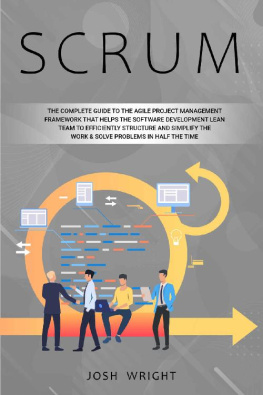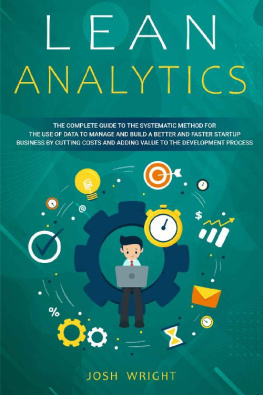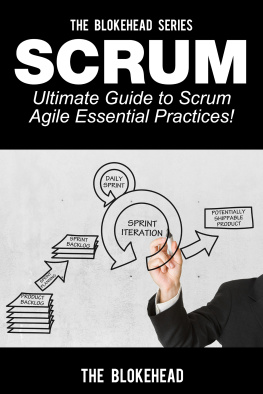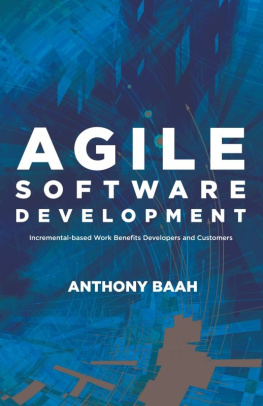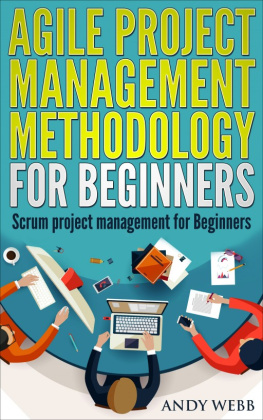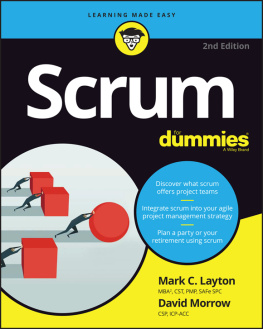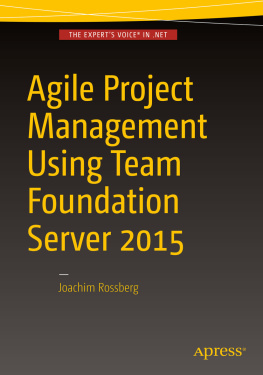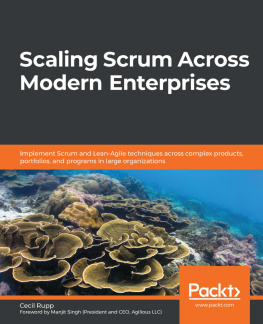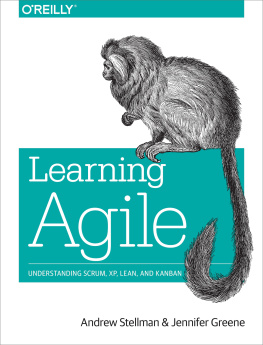Scrum:
the complete guide to the agile project management framework that helps the software development lean team to efficiently structure and simplify the work & solve problems in half the time
JOSH WRIGHT
Table of Contents
Copyright Page
Copyright 2020 - All rights reserved.
The content contained within this book may not be reproduced, duplicated or transmitted without direct written permission from the author or the publisher.
Under no circumstances will any blame or legal responsibility be held against the publisher, or author, for any damages, reparation, or monetary loss due to the information contained within this book. Either directly or indirectly.
Legal Notice:
This book is copyright protected. This book is only for personal use. You cannot amend, distribute, sell, use, quote or paraphrase any part, or the content within this book, without the consent of the author or publisher.
Disclaimer Notice:
Please note the information contained within this document is for educational and entertainment purposes only. All effort has been executed to present accurate, up to date, and reliable, complete information. No warranties of any kind are declared or implied. Readers acknowledge that the author is not engaging in the rendering of legal, financial, medical or professional advice. The content within this book has been derived from various sources. Please consult a licensed professional before attempting any techniques outlined in this book.
By reading this document, the reader agrees that under no circumstances is the author responsible for any losses, direct or indirect, which are incurred as a result of the use of information contained within this document, including, but not limited to, errors, omissions, or inaccuracies.
Introduction
Scrum is decisively a development of Agile Management. Scrum strategy depends on a lot of characterized practices and jobs that must be included during the product advancement process. It is an adaptable approach that rewards the use of the 12 spry standards in a setting concurred by all the colleagues of the item.
Scrum is executed in brief hinders that are short and intermittent, called Sprints, which generally run from 2 to about a month, which is the term for criticism and reflection. Each Sprint is an element in itself, that is, it gives a total result, a variety of the last item that must have the option to be conveyed to the customer with the least conceivable exertion when mentioned.
The procedure has as a beginning stage, a rundown of targets/necessities that make up the task plan. It is the customer of the task that organizes these goals considering an equalization of the worth and the expense thereof that is the manner by which the emphases and resulting conveyances are resolved.
From one perspective the market requests quality, quick conveyance at lower costs, for which an organization must be extremely deft and adaptable in the advancement of items, to accomplish short improvement cycles that can fulfill the need of clients without undermining the nature of the outcome. It is an extremely simple technique to actualize and well known for the snappy outcomes it gets.
Scrum technique is utilized for the most part for programming advancement, however different divisions are additionally exploiting its advantages by actualizing this procedure in their hierarchical models, for example, deals, showcasing, and HR groups and so on.
Scrum Development
In Scrum, the group centers around building quality programming. The proprietor of a Scrum venture center around characterizing what are the attributes that the item should need to manufacture (what to fabricate, what not, and in what request) and to defeat any deterrent that could ruin the undertaking of the improvement group.
The Scrum group comprises of the accompanying jobs:
Scrum ace: The individual who drives the group managing them to agree to the standards and procedures of the system. Scrum ace deals with the decrease of obstructions of the undertaking and works with the Product Owner to expand the ROI. The Scrum Master is responsible for staying up with the latest, giving instructing, tutoring and preparing to the groups on the off chance that it needs it.
Item proprietor (PO): Is the delegate of the partners and clients who utilize the product. They center around the business part and is liable for the ROI of the task. They Translate the vision of the venture to the group, approve the advantages in stories to be fused into the Product Backlog and organize them all the time.
Group: A gathering of experts with the fundamental specialized information who build up the task together doing the narratives they focus on toward the beginning of each dash.
Applications of Scrum
Scrum has been used worldwide extensively and applied across various use cases including but not limited to: research and identify markets, technologies, and product capabilities; develop and release products and enhancements as frequently as many times per day; maintain and sustain products, systems, and other operational environments. Further, Scrum has been used to develop software (embedded and otherwise), hardware, networks of interacting functions, autonomous vehicles, schools, government, non-profit organizations, marketing, operations, and almost everything we use in our daily lives.
Fundamental Scrum Trade-offs
There are four fundamental trade-offs defined by the Agile Manifesto that Scrum Framework implements:
- Individuals and interactions OVER processes and tools
- Working software OVER comprehensive documentation
- Customer collaboration OVER contract negotiation
- Responding to change OVER following a plan
Furthermore, there are three main focus areas that the Scrum Framework implements:
- Focus on value: Everything that is done with the Agile Mindset focuses on the value it creates. If there is value, then do it. If there is no value, then dont do it.
- Focus on collaboration: Scrum Framework focuses on teaming the people with the right skills and the right mindset for creative collaboration by providing the right cultural environment to enable and amplify strong collaboration.
- Focus on adaptability: Scrum Framework deals with the fact that requirements do change quickly and frequently. Therefore, teams re/de-prioritize existing work when it is realized that it is not valuable. For that reason, the Agile Mindset gives special emphasis on adaptability.
The Background of Scrum
You can apply these principles to your life to create an immediate sense of accomplishment. Although you may accomplish some of the goals you set, these goals may not be aligned with your values. Plus, if you don't recognize accomplishments regularly, you'll likely lose enthusiasm or get distracted easily.
Using this method, your definition of success will shift from what can I accomplish this year? to what can I do to move closer to my goals today? Every day becomes a successful day, and at the end of four weeks, just 28 days, you have something tangible to call success. Its inspiring and self-reinforcing. You become unstoppable.
You also become more flexible. If life throws you a curveball, its easy to adjust because you are nimble and focused on your values rather than some obscure, immovable object in the future.
Chapter 1 What is Scrum, A General Overview and A Little Bit of History about it
What is Scrum
Scrum is a deft improvement technique utilized in the advancement of software dependent on an iterative and gradual procedures. Scrum is versatile, quick, adaptable and powerful spry structure that is intended to convey an incentive to the client all through the improvement of the venture. The essential goal of Scrum is to fulfill the client's need through a situation of straightforwardness in correspondence, aggregate duty and ceaseless advancement. The improvement begins from a general thought of what should be fabricated, explaining a rundown of qualities requested by need (item build-up) that the proprietor of the item needs to get.
Next page
